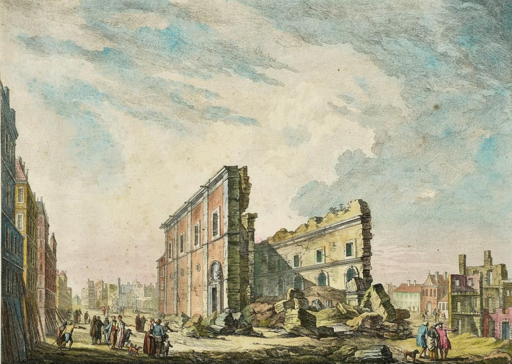Earthquakes have been part of our planet's history, as the Earth's crust constantly moves and builds pressure. Hundreds of strong earthquakes from the past have been recorded, and most of them have changed the Earth's landscape and affected our ancestors' lives.

(Photo: Wikimedia Commons/ Jacques-Philippe Le Bas )
One particular earthquake, the Great Lisbon Earthquake, was so strong that it not only brought severe damage to the city's inhabitants but also affected how we establish disaster preparedness in modern times.
What Happened During the Lisbon Earthquake?
On November 1, 1755, at around 9:40 in the morning, the city of Lisbon in the Kingdom of Portugal was struck by a several-minute-long earthquake. It was believed that between 60,000 and 100,000 people died either from the initial earthquake or by being trapped in the rubble of their collapsed homes.
Modern seismologists estimate the Great Lisbon earthquake had a magnitude of 8.5 - 9.0 on the Richter scale. Seismologic records also suggest that the epicenter was located in the Atlantic Ocean about 120 miles (200 kilometers) west-southwest of Cape St. Vincent.
The disaster caused widespread destruction throughout Lisbon, with most buildings destroyed. It also triggered a massive tsunami, which hit the city's harbor, leading to further destruction and loss of lives.
Since November 1 is celebrated by the Catholics as All Saint's Day, homes and churches around Lisbon were lit with candles. The earthquake eventually knocked them over, causing fires to break out throughout the city.
The violence of the earthquake demolished the city's large public buildings. Almost every major church in Lisbon was destroyed. As the city was left in ruins, it took many years to recover from the disastrous event.
Due to the earthquake's strength, its effects were felt throughout Portugal and some parts of Spain and Morocco. Damage was even reported as far away as Ireland and Algeria, with some waves from the tsunami felt in Brazil and the Caribbean. The Great Lisbon Earthquake of 1755 was indeed one of the worst natural disasters in Europe, ultimately shaping Lisbon as we know it today.
READ ALSO: Deep Earthquake Mystery Finally Uncovered After Almost a Century Since Discovery
Implications of the Disastrous Event
The earthquake affected much more than cities and buildings. Lisbon was the capital of a devout Catholic country, so investments were made in the church. Since the event took place in the 18th century, it appeared to be a manifestation of God's anger and was difficult to explain to the religious community.
Many thinkers of the European Enlightenment were also strongly influenced by the Great Earthquake. For instance, philosopher Jean-Jacques Rousseau believed that the devastation was due to too many people living within the city's close quarters. He also used this disaster as an argument against towns since he desired a more naturalistic way of life.
Other intellectuals involved in the Enlightenment participated in the discussion regarding the Lisbon earthquake. The event somehow challenged liberal views regarding the miracles and wonders of nature itself.
Therefore, the earthquake on November 1, 1755, can be considered the first "modern" disaster since it was the first to evoke a coordinated state emergency response. It also encouraged a forward-looking comprehensive effort for reconstruction to reduce future disasters.
RELATED ARTICLE: Modern-Day Earthquakes in the USA Could Be Aftershocks From Major Quakes in 1800s [Study]
Check out more news and information on Earthquake in Science Times.














